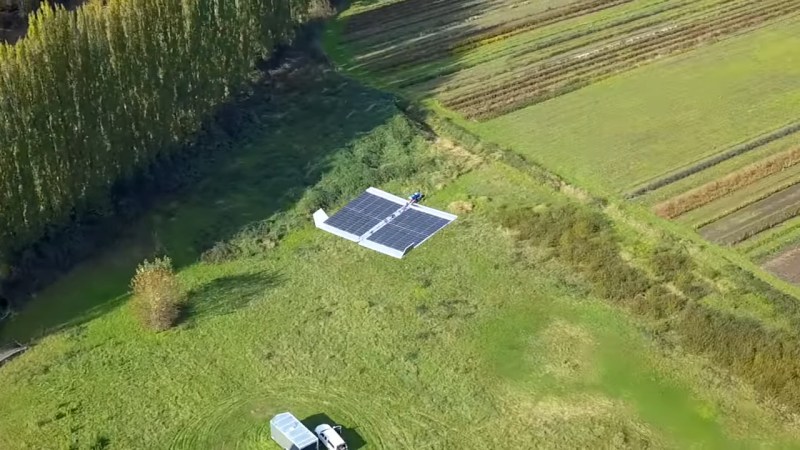Solar-powered plane concepts typically focus on high-efficiency glider-type designs, so as to make the best possible use of the limited power available from the sun. [rctestflight] wanted to try a different school of thought, instead building a relatively inefficient plane that nonetheless packed a huge amount of solar panels on board.
The plane consisted of a pizza-box style design, with a simple foam rectangular wing that was absolutely covered in solar panels. The plane was controlled with an off-the-shelf autopilot, and fitted with cheap, no-brand MPPT modules to handle charging the batteries. The plane faced difficulties in flight, most often with stability, which led to the autopilot getting the plane lost on one occasion. However, one flight was achieved with a full one hour and thirty minute duration, indicating the solar panels were helping to extend flight times beyond what was capable with batteries alone.
Further research on the ground showed that the cheap MPPT modules were wasting power, and there was more to be had. A better MPPT module was subbed in and showed that the panels could generate up to 5 amps under good conditions, while the plane only needed roughly 4.2 amps to fly. This would allow for indefinite flight in sunny conditions, though probably would not allow enough energy to be banked to fly 24 hours round the clock due to the lack of power at night.
We’ve followed [rctestflight]’s solar plane experiments for a while now, and can’t wait to see the next iteration. Video after the break.
















wow pizza box flyer thats a new one to me
Get domino’s as a sponsor. Make it look like one of their boxes.
Make it deliver my damn pizza.
When it comes to the lighter weight RC aircraft “in thrust we trust” covers a multitude of design sins.
With that in mind, the fact the “panels could generate up to 5 amps under good conditions, while the plane only needed roughly 4.2 amps to fly” seems to me to be a slim safety margin.
Well, he didn’t know that in advance.
Overall, I think it’s a really good effort for a solar plane. There are some easy variables to address that will improve the design (mainly weight optimization) but still very impressive. Some weight can be dropped by using custom built hardware instead of off the shelf parts. Non-optimized hardware negatively impacts factors like weight, size, and specific performance characteristics. Also, going with a longer wingspan to gain lift will help balance the flight characteristics in his favor even if that added area is not covered in solar panels.
Still, I am impressed with the overall results and look forward to future iterations as well. Focusing on optimization now should provide improvements easily.
Yes, larger aspect ratio will improve this thing immensely.
This guy has built a number of solar powered RC planes, most of which have much higher (but not enough, in my opinion) aspect ratios. I think he’s challenging the rules with this one – high aspect ratio means higher lift/drag, but also generally means higher weight due to the heavier spars needed for longer wingspans.
I am guessing that some of his off-the-shelf/crappy-China converters were also using a fair bit of that juice (big inductors for small currents usually equals old, low-frequency converters). Assuming that was the case, all he needed was 15% higher efficiency.
This could be significantly lighter by making custom amorphous solar cells. They would be less efficient but also so much lighter that it could fly longer.
What this plane needs to make is go much faster is.. speed holes.
Missed opportunity to use the Flying Pancake plane design.
One overlooked possibility is to use a simpler PWM charge controller rather than MPPT. The conversion efficiency can be higher, and the circuitry lighter as PWM needs less cooling and no buck circuitry. The only design consideration is to get a reasonable match between solar panel and battery voltage.
One could add weight to the front by making the lead edge wider which would make it look more like a glider instead of a box. The added weight would create lift while stabilizing the box. Nice extreme design though.